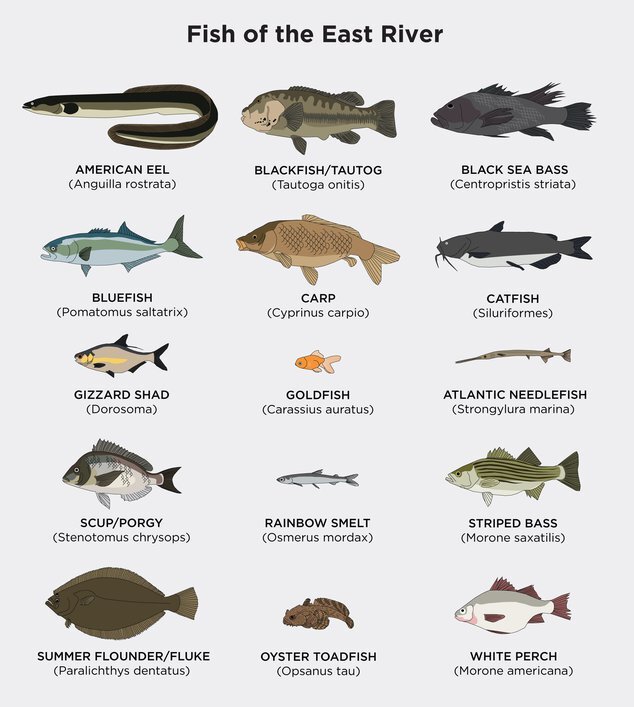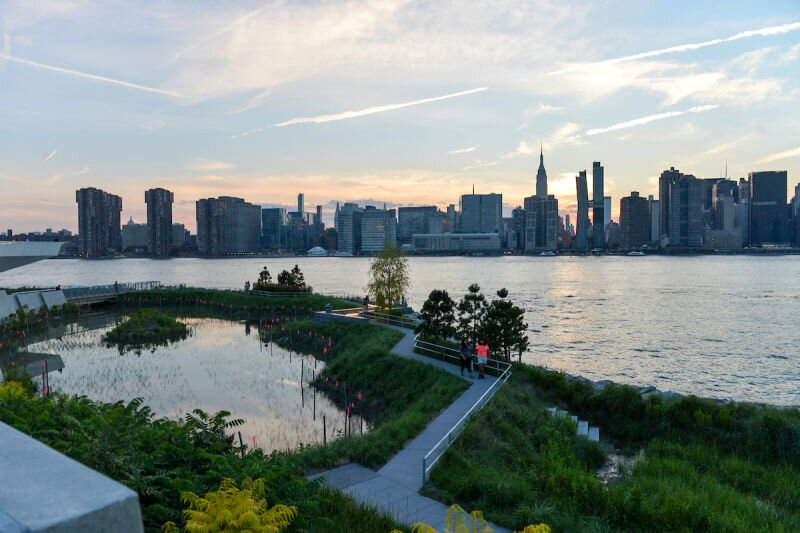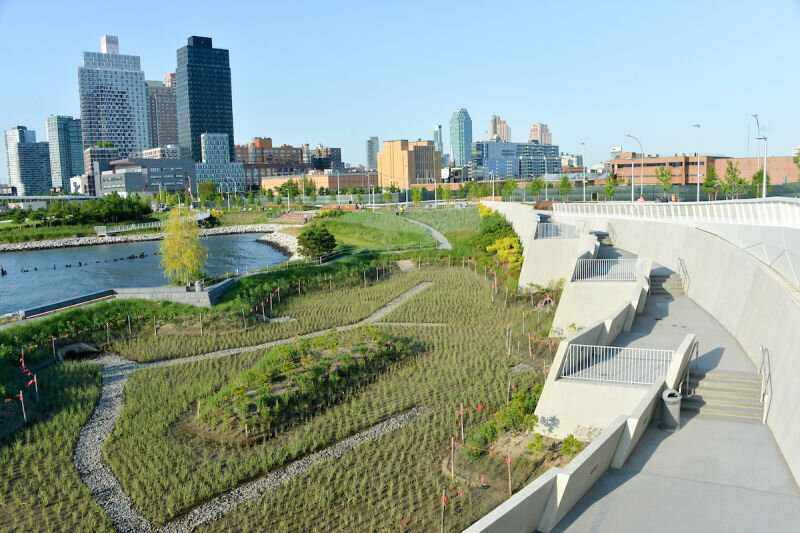Hunter’s Point South Park lines the coast of Queens along the East River. Keep reading to learn more about the River’s ecosystem and relationship to our waterfront parks!
The East River connects two parts of the Atlantic Ocean, the Upper New York Bar on the south end and the Long Island Sounds towards the north end. The East River changes its direction of flow frequently, and is subject to strong fluctuations in its current, which are accentuated by its narrowness and variety of depths. Since it is mostly salt water that flows through the East River, it is not technically a river, but a tidal estuary. Because of its varying degrees of salinity, the river is able to support a very diverse fish population. The East River is home to many different aquatic species, including striped bass, American eel, flounder, perch, and blackfish. The East River has also become home to one of the most harmful invasive species; the European green crab. The green crab reproduces rapidly and is a prominent predator. Throughout the 20th century, the green crab was responsible for a drastic decrease in clams, oysters, scallops, mollusks, crustaceans and other marine invertebrate populations, species critical to oxygenating and filtering the waterway. One individual green crab can consume over 40 clams per day!
Fish of the East River - Image Source
Because of Hunters Point South Park’s waterfront location, the river is just as integral to the park’s design as the on-shore landscape. Tidal salt marshes form a grassy fringe near river mouths, bays, and along coastlines protected from the East River. Hunter’s Point South Park contains 1.5 acres of tidal marsh which fill in with water twice a day during high tides. There are four different types of grasses planted in the marsh: low marsh grass (spartina alterniflora), high marsh grass (spartina patens), little bluestem grass (Schizachyrium scoparium), and beach grass (Ammophila breviligulata). These grasses are planted where they are based on where they would be found naturally. Each has a different preference for factors such as water inundation level and frequency, salinity, nutrient availability, and soil type. Each species of grass is salt tolerant, meaning they can withstand, without significant adverse effects, moderate or high concentrations of salt in water on their leaves or in the soil within reach of their roots. This is important as the East River contains brackish or semi-salty water. Tidal marshes provide many ecosystem services; serving as a habitat for many native species, including migratory birds and keystone species such as ribbed mussels, shielding land from storm surge and sea level rise, preventing shoreline erosion, and absorbing excess nutrients that would lower oxygen levels in the sea and harm wildlife.
Rip-rap is another resilient design feature of the park that functions as a line of defense for the coastline against the ever-fluctuating East River. Rip-rap is a permanent, erosion-resistant ground cover of large, loose, angular stone. Most of the shoreline of Hunter’s Point South Park and Gantry Plaza State Park is lined with rip-rap, which protects the park and neighborhood from water erosion, absorbs and deflects the impact of storm surges and waves, and maintains water quality by preventing the settling of sediments.
Rocky rip-rap lines the coast, protecting the shoreline from erosion.




